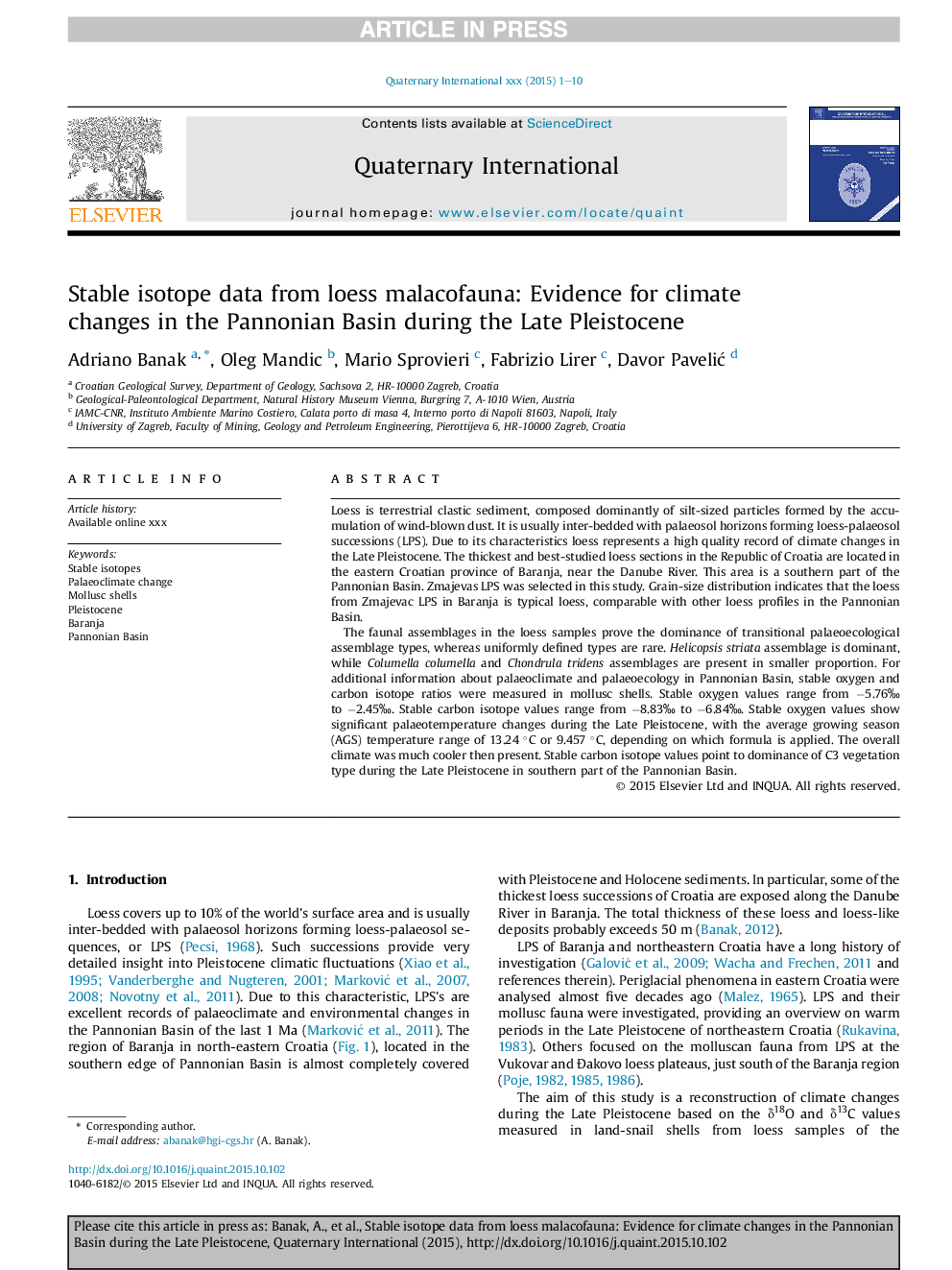| Article ID | Journal | Published Year | Pages | File Type |
|---|---|---|---|---|
| 5114150 | Quaternary International | 2016 | 10 Pages |
Abstract
The faunal assemblages in the loess samples prove the dominance of transitional palaeoecological assemblage types, whereas uniformly defined types are rare. Helicopsis striata assemblage is dominant, while Columella columella and Chondrula tridens assemblages are present in smaller proportion. For additional information about palaeoclimate and palaeoecology in Pannonian Basin, stable oxygen and carbon isotope ratios were measured in mollusc shells. Stable oxygen values range from â5.76â° to â2.45â°. Stable carbon isotope values range from â8.83â° to â6.84â°. Stable oxygen values show significant palaeotemperature changes during the Late Pleistocene, with the average growing season (AGS) temperature range of 13.24 °C or 9.457 °C, depending on which formula is applied. The overall climate was much cooler then present. Stable carbon isotope values point to dominance of C3 vegetation type during the Late Pleistocene in southern part of the Pannonian Basin.
Related Topics
Physical Sciences and Engineering
Earth and Planetary Sciences
Geology
Authors
Adriano Banak, Oleg Mandic, Mario Sprovieri, Fabrizio Lirer, Davor PaveliÄ,
